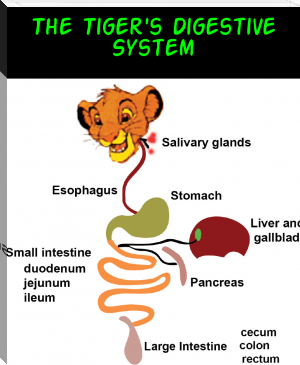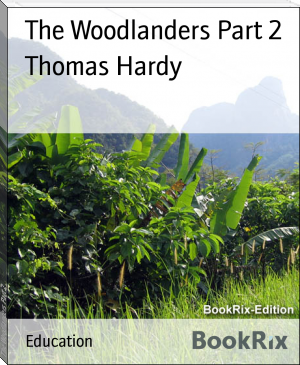Kentucky Coal Miners - Roger L. Philpot (ebook offline reader .TXT) 📗

- Author: Roger L. Philpot
Book online «Kentucky Coal Miners - Roger L. Philpot (ebook offline reader .TXT) 📗». Author Roger L. Philpot
"From darkness they came into the world
To toil in darkness and to darkness will return"
Coal mining in the 20th Century was extremely difficult for the miners and their families. They had many complaints about their occupation. The underground work was dangerous, dirty, and often damp. Miners working in the underground tunnels could not stand straight, ceilings in the tunnels being too low. They picked and shoveled the coal for ten hours a day. Late 18th century and early 19th and 20th century, the miners loaded the coal on small cars, and pushed them to an area where mules would pull the coal away from the face of the mines. After wards rubber-tired vehicles called shuttle cars hauled the coal to the immediate haulage system.
Miners breathed stale, dusty air and many developed a breathing ailment known today as "Black Lung." Miners used lumber to prop up the roof where they worked, but often huge rocks would fall, thus trapping, injuring, or killing them. Miners complained that the coal companies did not supply them with adequate rails, cars, lumber, or fresh air. Explosive gas was present in some mines and many miners were injured or killed by blasts
The most common complaint of the miners, however, concerned their pay, and the total control which the companies had over their financial well-being. Most mining towns were "company towns." The coal company owned the land. They built, rented, or sold the houses to their workers. If the miners quit work or went on strike, the company could evict them from their homes. They often forced workers to buy at "company stores," where credit might be more readily available, but prices were higher. Companies sometimes paid in "scrip," which was taken in trade only at the company store. At times, men who refused to buy from the company store were dismissed. Miners were usually paid monthly in the early days, with the company holding two weeks' back pay. Thus, miners who quit often lost two weeks' pay. Miners also had the expense of getting their tools sharpened, and they had to buy oil for their lamps which provided the only light underground
Miners were paid by the ton, and they often claimed they were cheated by the coal companies. The operators could easily cheat the men by saying that too many rocks and particles of clay had been put in the mine cars. Prior to 1898, the coal was dumped over screens which separated the coal into large and small lumps. Miners were paid for the larger pieces that remained above the screen. The coal companies sold the small chunks too, but these apparently were mined free.
The weather and business conditions in general, also affected the miners' paycheck. Most miners were unemployed during summer months, when the demand for heat decreased. If factories cut back or closed during a depression, even less coal was needed; so again miners were out of work. Annual income was seriously reduced by this seasonal unemployment, which seems to have been the most constant problem for the miners over the years. To correct these abuses,
the miners formed unions.
In 1890, the United Mine Workers of America was formed. It was created out of the various local unions then existing in Ohio, Pennsylvania, Illinois, and Indiana. A number of local miners were active in the formation of the national union. The UMWA was the nation's earliest and most successful industrial union, and it was the nation's largest union for several decades following 1900. An industrial union protects those who produce a certain product, regardless of what part they play in producing it--miners, auto workers are examples. A craft union represents workers who have a certain skill or trade--carpenter, electrician, musician. From 1899 to 1908, the UMWA president was John Mitchell, who was born in Braid Wood on February 4, 1870. He entered the mines as a trapper boy at twelve, and joined a union when he was only fifteen. In 1902, he was called to the White House by President Theodore Roosevelt to help mediate a strike of Pennsylvania miners.
The miners used many tactics to achieve their goals. Since they composed the large majority of the populace in some areas, they could elect candidates who were sympathetic to their cause.
The most successful weapon of the miners was the strike, in which all miners quit work and refused to return until their demands were met.
Harlan County, USA is a 1976 documentary film covering the efforts of 180 coal miners on strike against the Duke Power Company in Harlan County, Kentucky in 1973.This film illustrates how strikes affected the miners and the companies they worked for.
From coal towns came important labor leaders, among them John Mitchell and John L. Lewis.
Both became presidents of the United Mine Workers of America. Although born in Iowa, Lewis spent several years mining coal in Panama, Illinois.
As head of the nation's most powerful industrial union, Lewis founded the Congress of Industrial Organizations (CIO) in 1936. The American Federation of Labor (AFL) had refused to undertake an organizing campaign within the mass production industries. In concert with several sympathetic unions, Lewis and the UMWA went ahead with great success despite being expelled from the AFL. However, the two groups merged in 1954, becoming the AFL-CIO as we know it today.
In a coal camp, the company owned all the properties, the houses and everything associated with the camp. Miners who worked there, just worked for wages and the pay they received was not enough to provide decent living for their families. The houses were mostly four rooms without indoor plumbing, there were no streets, just dirt lanes filled with coal ashes from the "warm morning' stoves that were used to heat the home. Some houses only had a single fireplace for heat in the cold winters.
A general store owned by the company allowed the miners to trade for necessities. The miners used company monies called scrip which could only be redeemed at the company store. Tennessee Ernie Ford had it right with the song lyrics "I owe my soul to the company store".
Organized labor came into being, thanks to the United Mine Workers and John L. Lewis. This changed pay and mine conditions for the miner. Prior to the union, life was not easy. Folks had to "make do", which in my opinion made stronger and better people. This life did me no harm it made me a better person who appreciates what I have today, I am sure others who have experienced this life can give testament to that. I made this web site for those who have experienced this life and can appreciate what it means to be a coal miner's son or daughter.
The Dangers of Coal Mining
Mining accidents can have a variety of causes, including leaks of poisonous gases such as hydrogen sulfide or explosive natural gases, especially firedamp or methane, dust explosions, collapsing of mine stopes, mining-induced seismic, flooding, or general mechanical errors from improperly used or malfunctioning mining equipment (such as safety lamps or electrical equipment). Use of improper explosives underground can also trigger methane and coal dust explosions.
Falls of ground remain the greatest single hazard faced by underground miners. They caused nearly 50% of fatal injuries. When coal is first mined, large pillars of coal are left to support the rock between the mine and surface. When these pillars are removed, the ground collapses.
Black lung was prevalent and most of the miners contracted this disease. But in Eastern Kentucky, the disease persists — and is far worse than federal health officials anticipated it would be by now. Coal dust has blackened the lungs of miners for hundreds of years, and efforts to end black-lung disease stretch back decades. Black lung kills 1500 coal miners a year. I saw my Father come home every day covered with coal dust. Coal mining is a dirty filthy job. Organized labor came into being, thanks to the United Mine Workers and John L. Lewis. This changed pay and mine conditions for the miner. Historically, coal mining has been a very dangerous activity and the list of historical coal mining disasters is a long one. In the U.S. alone, more than 100,000 coal miners were killed in accidents over the past century, with more than 3,200 dying in 1907 alone. Open cut hazards are principally mine wall failures and vehicle collisions; underground mining hazards include suffocation, gas poisoning, roof collapse and gas explosions. Firedamp explosions can trigger the much more dangerous coal dust explosions, which can engulf an entire pit. Most of these risks can be greatly reduced in modern mines, and multiple fatality incidents are now rare in some parts of the developed world. Modern mining in the U.S. is only slightly more dangerous than driving, with .02% of miners dying in accidents, compared with .016% of the country's population dying in car accidents.
A Coal Miner's Son In His Own Words
I am the son of a Kentucky coal miner, I was raised in a coal camp, and in my OWN words I want to document this life on the web site, so those who are interested can read about that experience. First of all I would say there are other segments of our society that have experienced hardships and this is just one of them. In a coal camp, the company owned all the properties, the houses and everything associated with the camp. Miners who worked there just worked for wages and the pay they received was not enough to provide decent living for their families. The houses were mostly four rooms without-facilities or indoor plumbing, there were no streets, just dirt lanes filled with coal ashes from the "warm morning' stoves that were used to heat the home. Some houses only had a single fireplace for heat in the cold winters. A general store owned by the company, allowed the miners to trade for necessities. The miners used company monies called scrip which could only be redeemed, at the company store. Tennessee Ernie Ford had it right with the song lyrics "I owe my soul to the company store". I went to a school that was built on the side of the mountain. I had to walk three, maybe four miles to get there. Our basketball court was rock and dirt. Some of my class mates wore torn and ragged clothing, and were not clean.
Segregation was part of the poverty-ridden society back then. The African Americans, I am sorry to say, were worse off than the white people. A camp was provided for them separate from the whites, and I would wonder why it had to be this way. Discrimination was prevalent and this would bother me and as a child I knew it was wrong.
Miners didn't have the luxury of full week's pay at all times. Pinto beans became the main diet for the miner's and their families, I truly believe the pinto bean kept some families from starvation. Coal mining in the twentieth century was very dangerous, not to mention the hard work. A lot of the mining was done by hand, safety for the coal miner was not an issue for the coal operators. I can remember miners getting killed quite frequently. The top would cave in and crush them. Coal operators would neglect safety.





Comments (0)